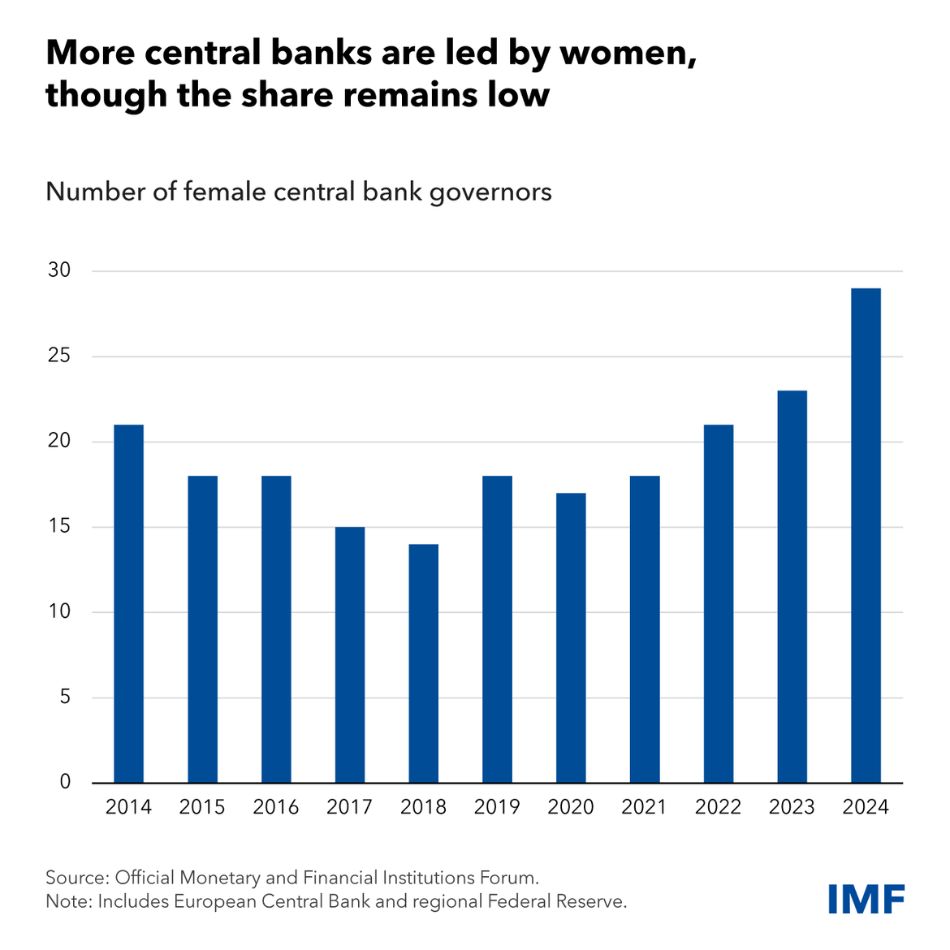
Women are leading more central banks than ever before, thanks to appointments in the past year, but recent gains still leave the share of female governors far short of parity.
The number of women in governor roles rose to 29 this year from 23 last year, though that left the share of female leaders at just 16 percent of the world’s 185 central banks, according to an April report by the Official Monetary and Financial Institutions Forum. Greater gender balance in senior positions may help increase the diversity of thought and checks and balances, in turn contributing to increased economic and financial stability and improved performance, IMF research shows.
Appointments this year in Bosnia and Herzegovina and Papua New Guinea are examples of how smaller economies are driving more progress on gender balance, according to OMFIF, a London-based think tank for monetary, economic and investment issues.
This year’s rise was the biggest gain in more than a decade of surveys, but the Chart of the Week shows how central banks still have much room to make progress toward greater parity in the ranks of top policymakers steering the global economy.

The tally adds to evidence of the struggle of women at central banks as well as in the economics discipline, where they remain underrepresented even after steady gains.
A first-of-its-kind IMF survey of the European Central Bank and its Group of Seven counterparts showed last year that fewer than half of employees at those institutions are women, but on average only a third of women are economists or managers. This survey underscores how policies to eliminate gender gaps have been only partially successful.
ECB Executive Board member Isabel Schnabel has cited a substantial gender imbalance in economics—one that the institution is determined to change among its own staff. Schnabel noted in a 2020 speech that the barriers aren’t insurmountable, and that mentoring opportunities and ensuring childcare can help narrow gender imbalances.
The latest additions to the list of countries naming a woman as central bank chief came in January, when Jasmina Selimović began a six-year term in Bosnia and Herzegovina and Elizabeth Genia was appointed to the top job after serving as acting governor. Last year, Michele Bullock became the first woman to lead the Reserve Bank of Australia.
Cambodia, Georgia, Moldova and Montenegro also appointed women as the heads of their monetary authorities last year, according to OMFIF’s 2024 gender balance index.

